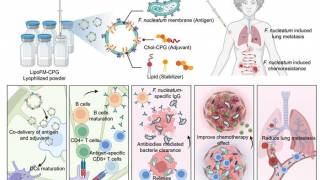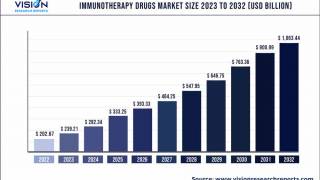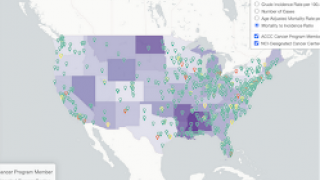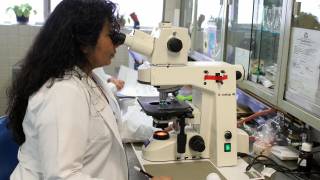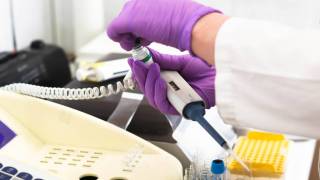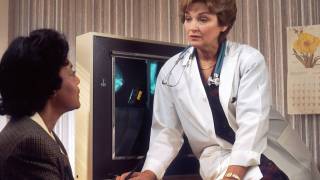HPV Vaccination Affirmed as ‘Safe’ Once Again

‘Wherever vaccination campaigns against vaccine-preventable cancers have launched, the rates of the pre-cancerous cervical lesions related to the human papillomavirus (HPV) have been reduced,’ said H. Cody Meissner, M.D., Tufts Medical Center, School of Medicine, Boston, Massachusetts.
‘For many generations, people have wished for a vaccine that would offer protection against cancer,’ continued Dr. Meissner, in an editorial published in the American Academy of Pediatrics online journal, on November 18, 2019, which are excerpted below:
‘Curiously, such a vaccine is now readily available but reluctance to administer or to accept the vaccine has kept HPV immunization rates far below those of other routinely recommended vaccines.’
‘The time has come for all vaccine administrators and parents to understand that the availability of the 9-valent human papillomavirus vaccine (9vHPV) is one end of a remarkable journey of discovery and progress to develop a safe and effective vaccine to prevent suffering and death from common cancer.
This HPV vaccine adds to the legacy of immunization as one of the most effective public health interventions for disease prevention and improvement of the health of humankind.
Deferral of HPV vaccination because of questions regarding safety, should no longer be defended as a reasonable option.
For each year that HPV vaccination rates remain low, thousands of preventable HPV-associated cancers will occur in men and women.
A theoretical concern that has contributed to HPV vaccine hesitancy relates to vaccine safety.
Two recent articles published in this issue of Pediatrics address HPV vaccine safety issues.
In the report from the Vaccine Adverse Events Reporting System, researchers analyze reports from a 3-year period during which 28 million 9vHPV doses were distributed.
In the 2nd report from the Vaccine Safety Datalink, authors describe surveillance for prespecified adverse events after the administration of >830,000 9vHPV doses.
In both reports, the authors conclude that the post-licensure safety profile of the Gardasil 9 vaccine is consistent with data from the pre-licensure trials and that no new safety concerns have been identified.
Which is important news for anyone seeking a cancer-prevention strategy.
"The HPV virus has cost Americans their health, fertility, and life for far too long," said Crockett Tidwell RPh, CDE, United Supermarkets Pharmacy.
"This scourge is preventable and this study reaffirms that there is no reason not to protect every adolescent and young adult. Recommending this vaccine should be part of every patient encounter," concluded Tidwell.
Estimates by the Centers for Disease Control and Prevention indicate that about 33,600 cancers are caused by HPV each year in the USA, with 20,200 cancers in women (mostly cervical) and 13,400 in men (mostly oropharyngeal).
Approximately 90 percent of these cancers could be prevented by the routine administration of the Gardasil 9 vaccine.
NOTE: Gardasil 9 is only available as a brand name vaccine, but offers consumers discount options.
More than 120 types of HPV are recognized and classified by sequences on an outer surface protein (L1) of the virus. Most HPVs infect cutaneous epithelial cells, whereas some HPVs infect the mucosal basal epithelium.
HPVs that infect mucosa are classified as non-oncogenic (low risk) or oncogenic (high risk), defined by their ability to cause precancerous lesions of the cervix (cervical intraepithelial neoplasia), anogenital cells, or oropharyngeal cells.
Infection with a high-risk type is a necessary requirement for cervical cancer, but the infection is not sufficient by itself to cause cancer, on the basis of the observation that most infected women resolve their HPV infection and do not develop cervical cancer.
A common feature of tumor viruses is a latent phase when replication and release of infectious viral particles from an infected cell are markedly reduced.
A latent infection is thought to allow the virus to hide from immune detection because the expression of viral proteins would stimulate an immune response that would eliminate the virus.
In the case of HPV, viral DNA can persist in a latent phase within the cell as naked nucleic acid, and protein expression is limited to a small number of viral proteins, some of which have oncogenic potential.
One theory as to why viral oncogenic proteins exist at all is because HPV replication requires the enzymes involved in host cell replication.
When a virus shifts from a latent phase to active replication, viral proteins are expressed to induce host cell replication, but if cell replication becomes uncontrolled, a tumor results.
This theory has been offered as an explanation for the interval of several decades between HPV infection that commonly occurs in the late teenage years or early 20s and the development of cervical cancer decades later.
‘It also explains why the HPV vaccine is only prophylactic and is not protective if infection occurs before vaccination,’ concludes Dr. Meissner.
Previously, a separate study reported that just 1-dose of the HPV vaccine provides about 47 percent protection against high-grade cervical lesions in women.
Additionally, as adolescents who were vaccinated with the 3-dose recommendation reach the age for cervical cancer screening, future analyses can better evaluate the vaccine’s effectiveness of fewer doses administered consistent with current recommendations, concluded these researchers.
Each HPV vaccine—Gardasil® 9, Gardasil®, and Cervarix®—went through years of extensive safety testing before they were licensed by the U.S. Food and Drug Administration.
Since late 2016, Gardasil 9 has been the only HPV vaccine available for use in the USA.
And the CDC recently extended this cancer-prevention vaccine for older individuals.
On June 26, 2019, the CDC's Advisory Committee on Immunization Practices voted unanimously to recommend the HPV vaccination for most men and women through age 45.
Opinions expressed in these commentaries are those of the author and not necessarily those of the American Academy of Pediatrics or its Committees. Address correspondence to H. Cody Meissner, M.D., Tufts University School of Medicine, E-mail: cmeissner@tuftsmedicalcenter.org
The author has indicated he has no financial relationships relevant to this article to disclose and has indicated no potential conflicts of interest.
The related studies to this editorial can be found online at the following links:
- Safety of the 9-Valent Human Papillomavirus Vaccine
- Near Real-Time Surveillance to Assess the Safety of the 9-Valent Human Papillomavirus Vaccine
HPV news published by Vax Before Cancer
Our Trust Standards: Medical Advisory Committee


